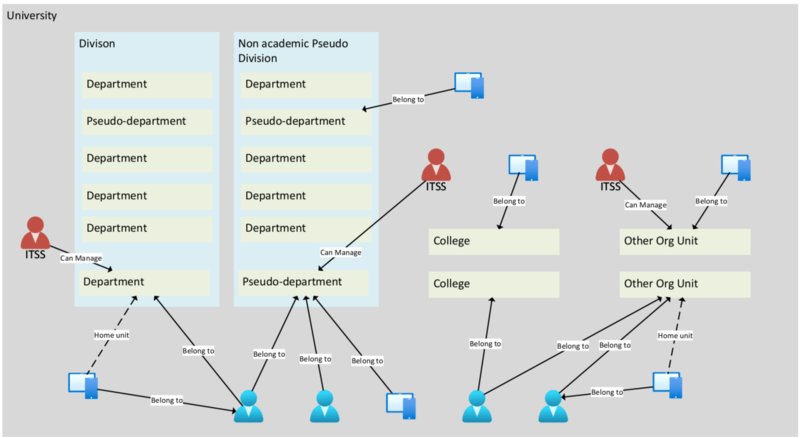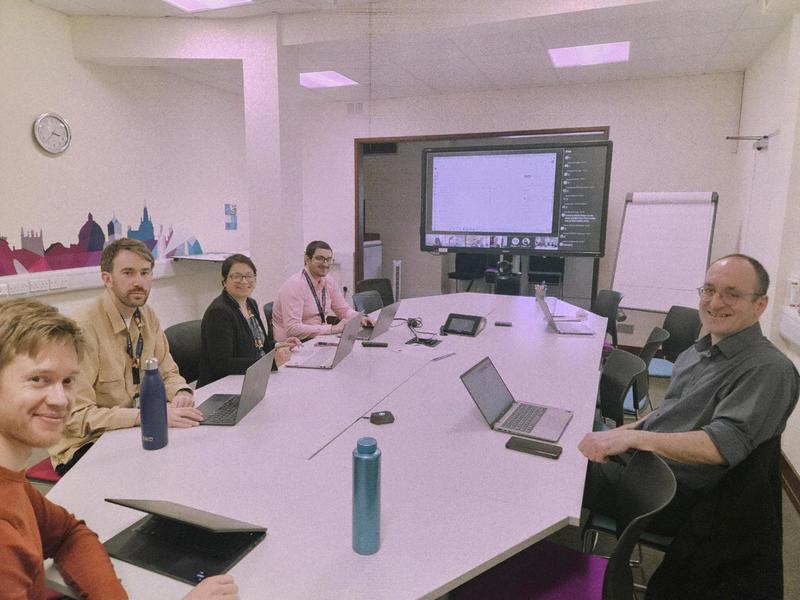Shared Device Management: March Sprint Update
Welcome to the very first of our Shared Device Management (SDM) monthly project updates!
The product vision for the SDM project is to provide staff and students with the best working experience, anytime and anywhere.
To achieve our vision, we’ll provide a system to be used across all staff and student devices as one shared service, to ensure people have the best experience possible when working or studying at the University of Oxford.
Why do we want to do this?
We know our current device management landscape is fragmented, with many different solutions administered in different ways across the collegiate university. The lack of consistency often creates friction when delivering services.
What do we want to achieve?
-
Enhance user experience: by ensuring consistency across the collegiate university, by providing a better experience for device holders and device administrators by using established technologies such as Oxford SSO, enabling staff to work together and support each other with ease
-
Align with the shared model: which will be informed by, and informing, the shared principles as the first shared service to come out of the programme
-
Provide clearer and consistent standards: by using best practice for device security and management that can be applied university-wide, helping to reduce our cyber risk.
How does agile working work for this project?
Our approach to delivering this project is to use Agile methodology. Given the nature of the project, we are using a combination of Scrum and Kanban which means we are working in 2-week sprints and visualising our work on a Kanban board.
You can read more about Agile working via: Agile methods from the Government Digital Standard.
In line with this we have a multi-disciplined team that include service design, user research, delivery and technical expertise that include members for a mix of divisions and central IT.
March 2025
Summary of March sprints
Throughout March, we have explored how the university’s IT support structures could be mapped into the Microsoft Intune prototype. We’ve also researched how devices are currently being managed within different teams across the university.
We facilitated a brainstorming session with the team to draw out some design concepts that are going to be prototyped, which you can see in the image below.

Mapping the IT structure of the University
Our approach on how we could implement the unit admin model
We will be testing these concepts with teams that we’ve been engaging with as part of our research to see where this model aligns with their services and where it needs to be iterated.
Alongside this, we’ve been researching the current landscape of how devices are managed in the university so we can better understand it.
What have we learnt in March?
The mapping process
To begin the work on how the university’s IT support structures could be mapped into the Microsoft Intune prototype, we’ve created the naming convention and some base configuration in the prototype.
Our approach to mapping out the current landscape of how devices are managed across the university has been to carry out interviews with individuals from several departments across the divisions and the centralised IT teams.
The data we have collected from these sessions have been used to create journey maps to help us identify opportunities and challenges when designing a shared device management service.
James Cox (user researcher and one of the newest members on the team) shares his thoughts:
“I’ve been working closely with Lawrence (service designer) and Princy (business analyst) to explore the current state of device management across several academic divisions. These early insights are shaping the foundation for a broader, more in-depth research plan to support the development of a user-centred solution.”

The team in the second sprint planning session. L-R: James Cox, Lawrence Richards, Rosanna Alam, Siddhant Pariani, and Trevor Mundell
Agile working
Working in an agile team has been challenging, but a good learning experience. By having candid conversations in our retrospective sessions, we can improve how we approach sprint planning. Story pointing being one of them, where we decide on the complexity of the tasks and to promote collaboration. We haven’t quite got it 100% right yet but we will continue to revisit this as the team gains further experience and confidence.
The two sprint sessions in March were recorded if you would like to catch up:
What’s coming up next?
In April...
-
We’re aiming to complete the work on the RBAC model and configure it in the prototype created by the team.
-
We’ll also be doing further analysis on our research and will complete the mapping out of the current landscape. In addition, we’ll devise a prioritisation framework to support the adoption of rolling out a shared device management service.
We hope this has been a helpful insight into what March has involved for the SDM project. We’ll be back again with more updates on the April sprints, and how the project is progressing at the end of the month.
You can access the images from this article as well as further documents linking to this month's sprints via the project's Sharepoint site.
Any questions, please email shared.infrastructure@admin.ox.ac.uk and do join the Teams channel for further updates.
Sign up to receive SISP updates via email



